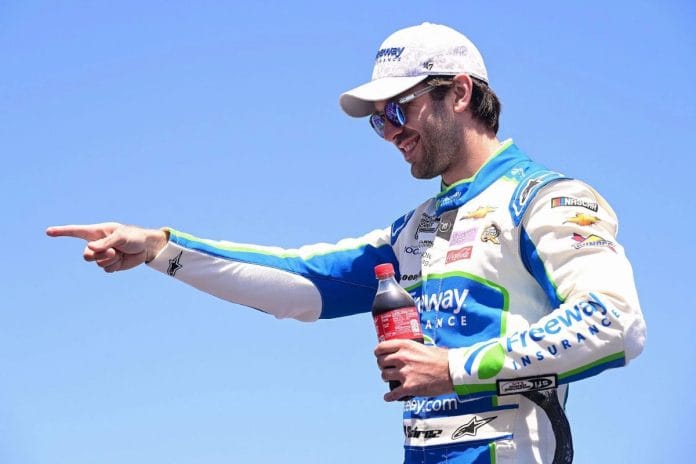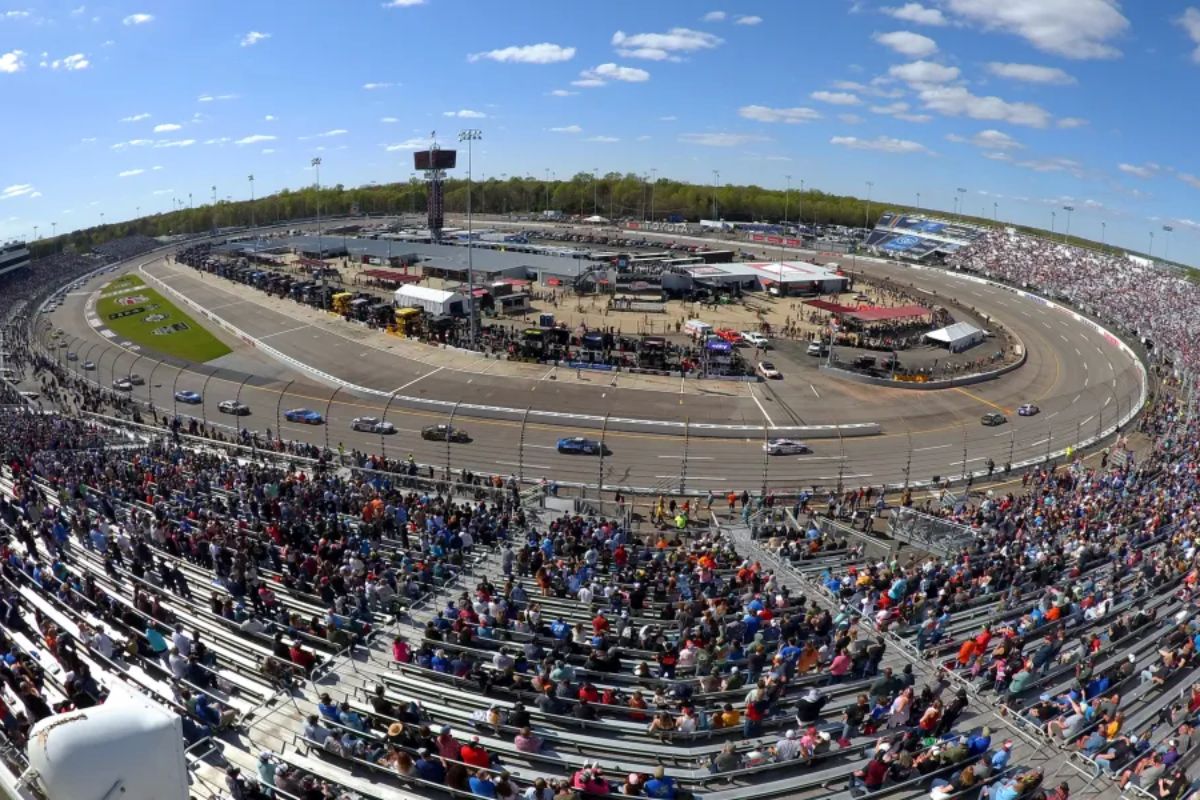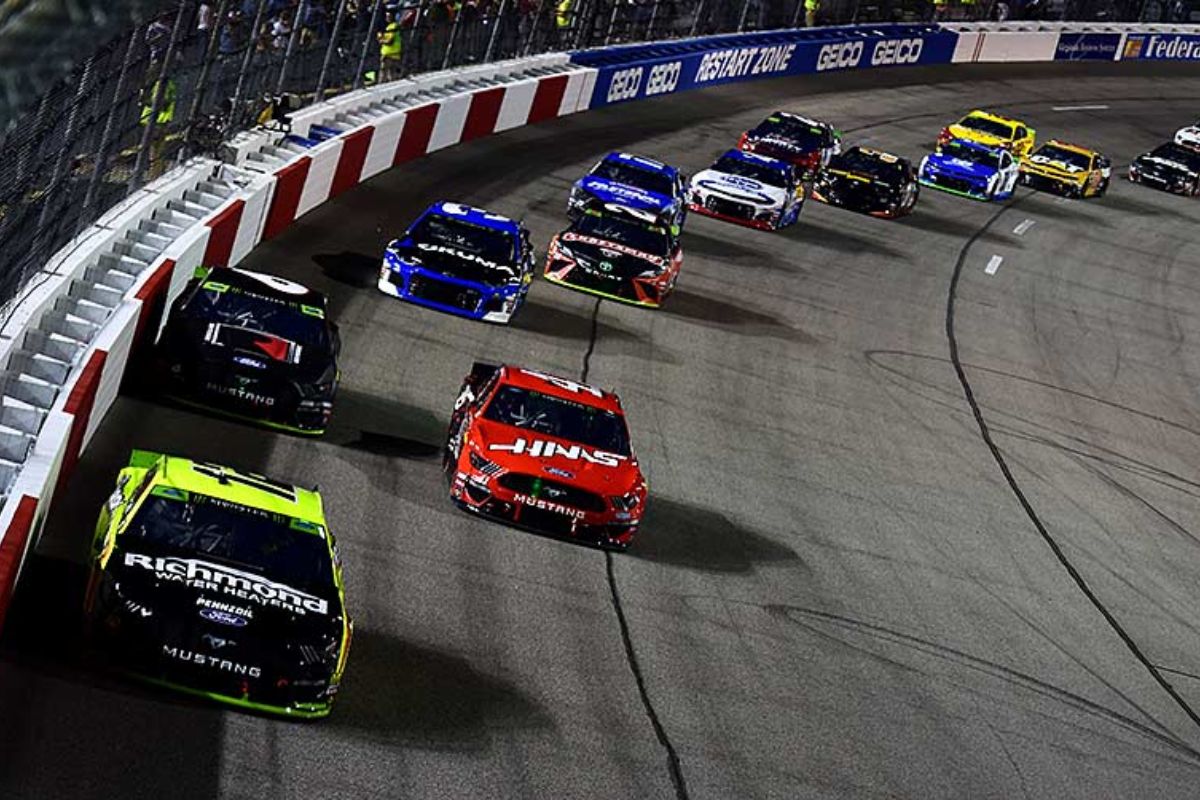Daniel Suarez Praises Richmond’s Tire Options: Daniel Suarez‘s commendation of Richmond Raceway‘s new tire options signals a crucial moment in NASCAR’s evolution, particularly with the introduction of dual compounds designed to improve competitive dynamics. His assertion that these tire variations will facilitate overtaking and tactical flexibility reflects a collective anticipation among drivers for a more engaging racing environment. As teams prepare to adapt their strategies to the unique challenges presented by these tire choices, the implications for race outcomes and driver performance merit further exploration. What specific strategies might teams employ to utilize these tire advantages?
Key Highlights
- Daniel Suarez expressed excitement about the new tire options at Richmond, highlighting their potential to enhance overtaking and overall racing dynamics.
- The introduction of prime and red-marked option tires allows for strategic flexibility in race pacing and pit stop decisions.
- Drivers anticipate that the dual-tire compound strategy will improve competitive parity on short tracks, addressing previous struggles with overtaking.
- Initial testing during the All-Star race showed promising results, with drivers noting increased handling diversity and overtaking opportunities.
Tire Options for Richmond Raceway
The introduction of multiple tire options at Richmond Raceway presents teams and drivers with tactical choices that could considerably influence race outcomes. This weekend’s NASCAR Cup Series event allows for the use of both the conventional Prime tire and the new red-marked option tire. Each tire type brings distinct characteristics that teams must carefully consider when devising their race strategies.
The Prime tire, designed for durability, offers extended performance at the cost of grip. This makes it an appealing choice for teams favoring a conservative approach, especially in the latter stages of the race where tire management becomes critical.
In contrast, the red-marked option tire, characterized by a softer compound, improves grip but sacrifices longevity. This tire may create opportunities for drivers to gain notable positions early on, potentially reshaping the competitive landscape of the race.
The tactical implications of these tire choices extend beyond mere speed. Teams must evaluate track conditions, weather forecasts, and their own vehicles’ handling characteristics to determine when to switch between tire types. Decisions made during the race regarding tire selection could dictate pit stop timing and general race pacing, compelling teams to stay adaptable and responsive to the evolving conditions on the track.
Driver Reactions and Expectations
How do drivers perceive the introduction of new tire options at Richmond Raceway? The consensus among competitors is largely positive, with many expressing enthusiasm for the added tactical complexity these options will introduce. Daniel Suarez, driver of the #99 car, articulated this sentiment during a recent media engagement, emphasizing that the new tire choices could facilitate overtaking, a challenge that has plagued drivers in recent years. He noted, “It takes more work to be able to do something like that,” highlighting the potential for improved racing dynamics.
“I’m a big fan of this. Because you’re going to see different options, Right now, it’s not a secret that it’s not easy to pass, like in the old five years ago. […] It takes more work to be able to do something like that. So, I feel like having option tires is one more thing into the equation of the stride and I am a big fan of that.” – Suarez
NASCAR had about a 30-minute meeting with drivers (it does one every few weeks) at Nashville. Among the topic discussed were tires — the wet-weather tire procedures as well as possibly using the North Wilkesboro "option" (softer) tire at Richmond. Denny Hamlin's thoughts: pic.twitter.com/aKhh2SkJAy
— Bob Pockrass (@bobpockrass) June 30, 2024
Drivers anticipate that these tire options will not only influence race strategy but also improve competition. With different compounds available, teams can tailor their approach based on track conditions and individual driving styles, potentially leveling the playing field.
These varied expectations reflect a shared optimism that the introduction of new tire options will not only enrich the racing experience but also reinvigorate the challenge of racing at Richmond. As teams prepare to adapt to these changes, the upcoming races promise to deliver heightened excitement and competition.
Background and Testing
In response to the Next-Gen car‘s struggles on short tracks, NASCAR has implemented a dual-tire compound strategy, aiming to improve racing dynamics and promote competitive overtaking at Richmond Raceway. The challenges faced by the Next-Gen car, particularly its aerodynamic characteristics that hinder passing, have prompted this creative approach. High tire wear observed during a recent Bristol race highlighted the potential for better racing experiences, igniting discussions among officials and tire supplier Goodyear.
The dual-tire compound strategy was initially tested during the All-Star race earlier this year, where its efficacy was closely monitored. This testing phase provided invaluable data, revealing that varied tire compounds could greatly influence race strategies and driver performance. Drivers reported more diverse handling characteristics, which contributed to an increase in overtaking opportunities. The positive feedback from this trial laid the groundwork for its introduction in a points race, marking a crucial shift in NASCAR’s approach to short-track racing.
Steve Letarte breaks down the key differences between the slick and wet-weather tires. 👀
📺 : #NASCAR | NBC and Peacock pic.twitter.com/cmOzBIXtb3
— NASCAR on NBC (@NASCARonNBC) July 7, 2024
As Richmond approaches, the anticipation surrounding these new tire options reflects a broader desire for competitive parity and excitement. The dual-tire strategy not only aims to address the inherent limitations of the Next-Gen car but also seeks to reinvigorate the short-track racing spectacle. With strong performances anticipated, the upcoming race will be a key evaluation of this strategy’s impact on the sport and its ability to foster dynamic racing environments, ultimately reshaping the competitive landscape at Richmond Raceway.
Elton Sawyer suggests that better tire management might address the Next-Gen car’s issues on short tracks. Fans saw a glimpse of this potential solution earlier this year at Bristol. However, it’s still uncertain whether this approach will be effective on other short tracks.
“We didn’t get the results at Wilkesboro that we were hoping for, with a very similar opportunity that we had at Bristol where we did see results, and even at Iowa where we did as well. Any time we can put our teams in a position where they have to manage tires, we really see some great racing and we see an entertaining race.” -Sawyer
Tire Allocation and Usage
With the introduction of the dual-tire compound approach, NASCAR has established specific tire allocation guidelines for teams competing at Richmond, emphasizing the importance of tactical usage to improve performance throughout the race. This tactical framework requires teams to carefully consider not only the quantity of tires available but also their characteristics, as different compounds offer varying grip levels and wear rates.
The allocation typically provides teams with a limited number of tires, necessitating astute planning regarding when to deploy each set during practice, qualifying, and the race itself. Teams must analyze track conditions, weather patterns, and driver performance to optimize tire usage. For instance, softer compounds may yield quicker lap times but will degrade faster, requiring drivers to balance speed with tire longevity.
Moreover, the dual-tire strategy presents an opportunity for teams to employ diverse racing tactics. A driver can choose to start on a harder compound to improve fuel mileage and track position, while others might opt for a softer compound to gain early momentum. This decision-making process is critical, as it directly influences race strategy and overall results.
Ultimately, effective tire allocation and usage not only impact individual race performance but also contribute to the broader competition landscape in NASCAR. Teams that master these guidelines will likely find themselves at a competitive advantage, steering through the complexities of tire management with precision and foresight.
News in Brief: Daniel Suarez Praises Richmond’s Tire Options
The introduction of dual compound tires at Richmond Raceway signifies a crucial advancement in NASCAR racing dynamics.
By providing teams with the flexibility to adapt strategies to varying track conditions, these new tire options promise to improve overtaking opportunities and general competition.
The positive reception from drivers indicates a collective anticipation for a more engaging racing experience.
Ultimately, these changes may foster a more thrilling environment, benefiting both participants and spectators similarly.
ALSO READ: NASCAR Compares Noah Lyles’ Win to Daniel Suarez’s Photo-Finish: What You Need to Know!




